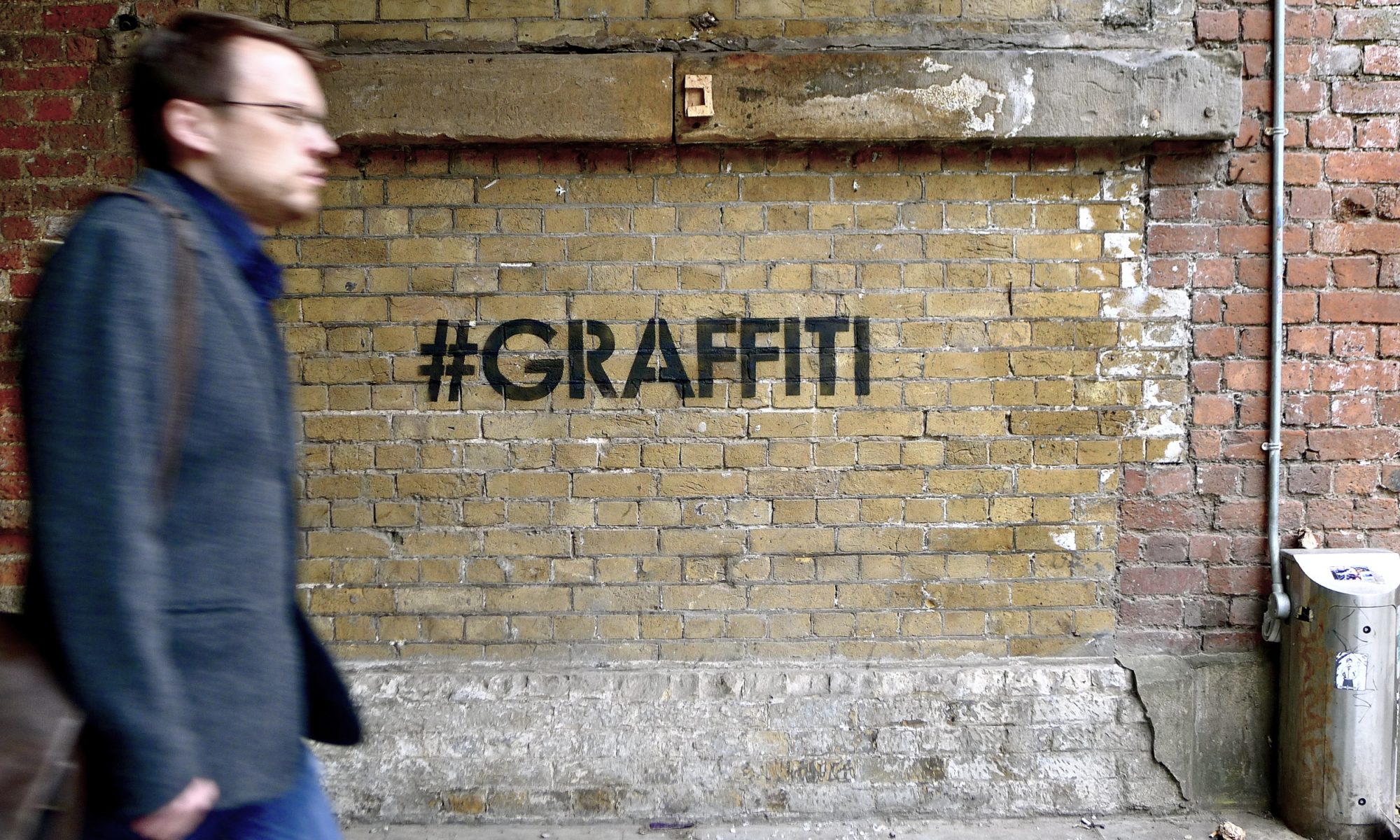
Last month, “urban contemporary art” came to Long Beach, California. Thanks to Pow! Wow! and ThinkSpace Gallery, the Long Beach Museum of Art is currently hosting Vitality and Verve: Transforming the Urban Landscape, an exhibition of talented and famous painters like Low Bros, Meggs, Andrew Schoultz, Saber, and Audrey Kawasaki. It was supposed to be a show about painting with artists “demonstrating the skilled and nuanced application of their craft,” and, for the most part, the works in Vitality and Verve are well-painted and beautiful. Except for one. Saber’s installation.
Saber says that he had planned to paint something “hyper-decorative,” but after conversations with Revok and some people at the museum, as well as hearing how Meggs was going to approach his piece and spending time reflecting on the political situation in Long Beach and the country as a whole, he decided to go a different route, what he calls “an ugly piece for an ugly situation.” Saber’s installation, TOO MANY NAMES, features a faded American flag covered by a series of tags of the names of men and women killed by police in 2015, topped off with a fire extinguisher piece of the name Hector. Hector refers to Hector Morejon, an unarmed teenage boy who was killed in Long Beach earlier this year when a police officer mistook Morejon’s can of spraypaint for a gun (the officer had been called to the scene on reports of graffiti).

No, TOO MANY NAMES isn’t beautiful, but it might be the only piece in Vitality and Verve that anyone will remember in a year’s time. And it almost didn’t happen. There was push back. Saber was told not to use red paint for Hector’s name, that it could come across as a bloody mess. Instead he used blue. That seemed to solve things temporarily, but Saber says that once Hector’s name went up in blue fire extinguisher, the museum potentially came under pressure (Saber doesn’t know from whom) to pull the piece from the exhibition or go in a completely different direction.
Saber is quick to defend Thinkspace, Pow! Wow!, employees and LMBA Director Ron Nelson, pointing out that they didn’t want to censor the piece and that “even doing a happy-go-lucky street art show at that museum is controversial in its own right. This medium is still new and unknown to the donors and public as a whole.” After all, the most common response Saber heard from visitors to Vitality and Verve was along the lines of “Oh my God, they used spraypaint. Look how talented these kids are.”
It’s a good things that LMBA didn’t succumb to the pressure and censor TOO MANY NAMES. The response has been phenomenal. A new and extensive interview with Saber in Mass Appeal has been making the rounds, the grittier side of graffiti has once again made its way into a museum, and Hector’s story is reaching new audiences.
While things have turned out okay, the decision to paint TOO MANY NAMES wasn’t easy. Saber supports his family with his art. Every time he paints something controversial, to speak out about an injustice, it comes with an added pressure. He says he has to ask himself if he’s going to cut out a collector, and if it’s worth the risk. And so TOO MANY NAMES also confronts larger trends in street art, graffiti, and “urban contemporary art.” While Saber says he doesn’t want to be controversial for the sake of it, he does want to create discussion. He believes that “Street Art has become a voice for corporations, and very few people are painting on topics that matter.”
So, if you agree, as so many people seem to, that TOO MANY NAMES is the most powerful piece in Vitality and Verve, maybe we in the street art and graffiti communities need to spend more time creating and celebrating art that provokes discussion and less time celebrating artists who are simply “demonstrating the skilled and nuanced application of their craft.”
Photos courtesy of Saber and Meggs
